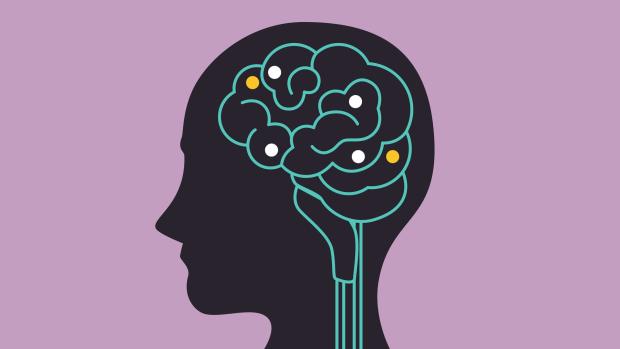
Illustration : Purabi Deshpande / Research Matters
How do we remember what we had for dinner last night, or our graduation ceremony? Are these memories physically stored in our brains? When we reach into the depths of our brain to retrieve the name of a long-lost friend, how does the brain retrieve that information?
A long-held view in neuroscience is that memories are stored as physical changes in brain cells or neurons. New experiences cause increased activity in neurons, which strengthens connections between them. This priniciple is called Hebb’s Law – neurons that fire together wire together.
More specifically, there is evidence that collections of brain cells called engrams encode specific memories, sort of like how information is burnt into the grooves of a CD. The theory runs thus – experiences trigger coordinated activity in a set of cells that then represent the memory of that experience.
You’re driving down a mud lane somewhere in rural India, and the smell of cowdung wafts through your open window. This sensory experience triggers activity in a set of ‘cowdung (+) neurons’ in your brain. These ‘cowdung engram’ cells now store the memory of the smell of cowdung.
Groundbreaking recent studies in mice have shown that engram cells encoding a memory can actually be identified. In this case, it was the memory of an unpleasant event – a shock to the foot. Forcibly triggering these cells even causes the poor mouse to remember the associated event, even when there was no foot shock!
This is all very well, but a lot of questions remain. If memories are indeed stored as engrams, how are they recalled at later times? What is the mechanism behind this retrieval? A new article led by Mani Ramaswami, adjunct professor at the National Centre for Biological Sciences (NCBS), Bengaluru (with coauthors Helen Barron, Tim Vogels and Tim Behrens from the University of Oxford) proposes the new concept of ‘inhibitory engrams’, counterparts to their excitatory brethren. The article proposes that inhibitory engrams are responsible, among other things, for maintaining memories in a ‘latent’ state, to be recalled upon demand. Ramaswami says, “The concept explains how we store perceptions and memories in a latent form in the brain, and provides a framework to explain how feelings and memories are reactivated and recalled.”
To understand the basis of the inhibitory engram concept, it is important to understand the brain’s need to balance itself. The brain contains two major classes of cells – excitatory and inhibitory. Excitatory cells release neurotransmitters that trigger activity in the cells they are connected to, whereas inhibitory cells release neurotransmitters that reduce the activity of cells they are connected to. The brain maintains a balance of excitation/inhibition – what goes up tends to come down. This balance, Ramaswami says, is important to prevent “runaway excitation”, which would lead to a “broad increase in excitation and very limited storage capacity in the brain.”
Excitatory/inhibitory balance forms the basis of the inhibitory engram concept. When an experience is recorded as an engram of excitatory cells, the brain’s need to balance itself ends up forming an inhibitory replica. Your cowdung experience, for example, results in increased excitation of a group of ‘cowdung (+) neurons’ in the brain. The inhibitory neurons associated with the ‘cowdung (+) neurons’ – let us call them ‘cowdung (-) neurons’, are also strengthened, creating a negative replica of the ‘cowdung (+) neurons’.
What is the function of the inhibitory engram? One possible role is to quench a familiar memory, maintaining it in a latent state to be recalled at a later time. The authors point to studies in songbirds which show that inhibitory engrams ‘silence’ newly formed memories and removing this inhibition activates the memory. In the cowdung example, if the cowdung (-) neurons are weakened, say after a period of time when the smell is not around, then reintroducing the smell triggers a recall of the original memory.
In 2014, Ramaswami proposed a different function of inhibitory engrams: habituation, or the ability to ignore familiar stimuli. Again, in the cowdung example, the cowdung (-) cells silence the feeling associated with the smell. Therefore, even if the smell is still around, we don’t ‘smell’ it anymore because we have become habituated.
The inhibitory engram theory is particularly useful in coming up with mechanistic explanations for several neurological disorders. Memory disorders like Alzheimer’s disease could be caused by faulty ‘recall’ mechanisms. Even if physical memory storage through engrams is intact, lack of the appropriate disinhibition may cause problems with the recall of the memory. Faulty habituation mechanisms could also cause the repetitive behaviors seen in autism spectrum disorder (ASD) as well as hallucinations and delusions in schizophrenia.
Ramaswami believes that the insight into neurological diseases could help guide approaches to treat these disorders. “An increased focus would be on a combination of cognitive, environmental and pharmacological approaches that [facilitate] formation of inhibitory engrams that help the brain cope with distractions and confoundment among various external inputs and diverse stored memories”, he says.






